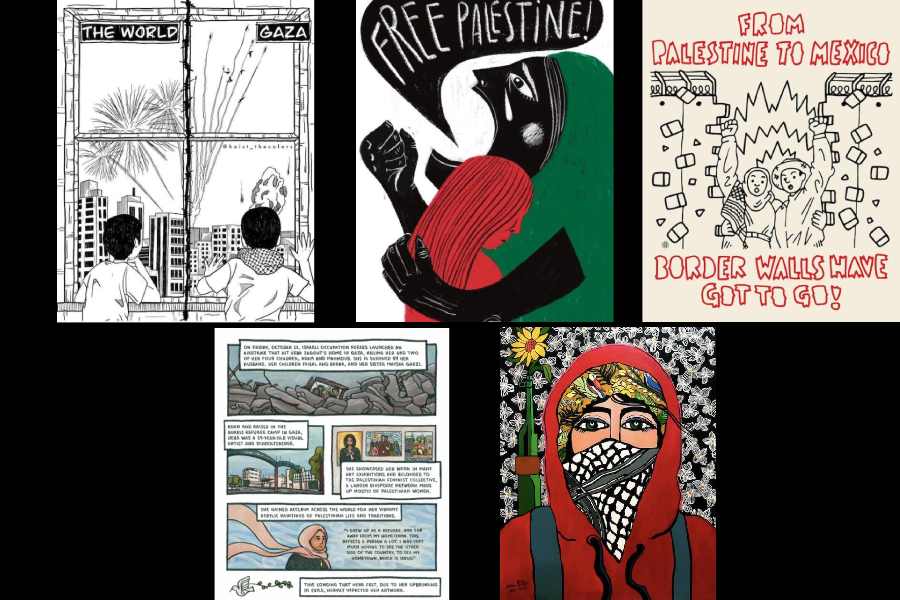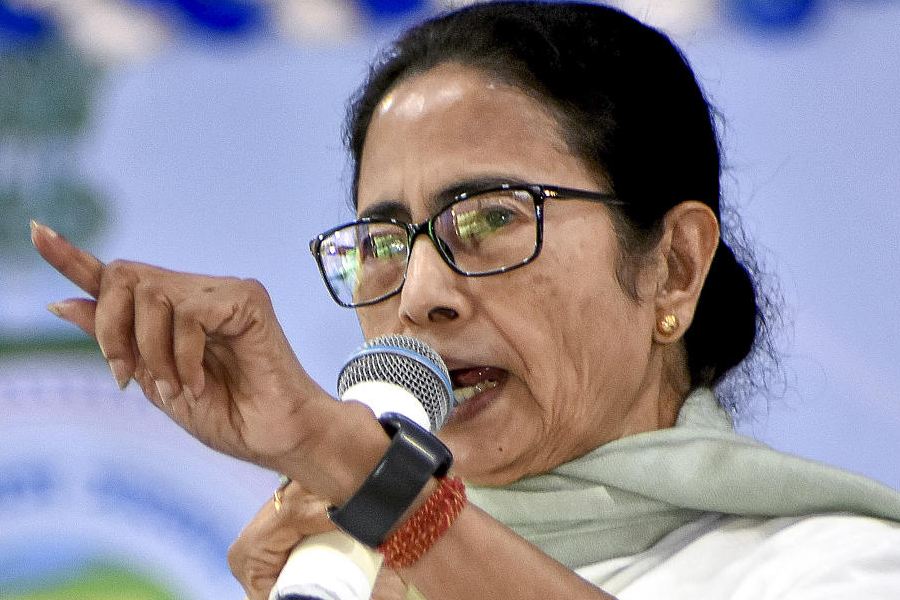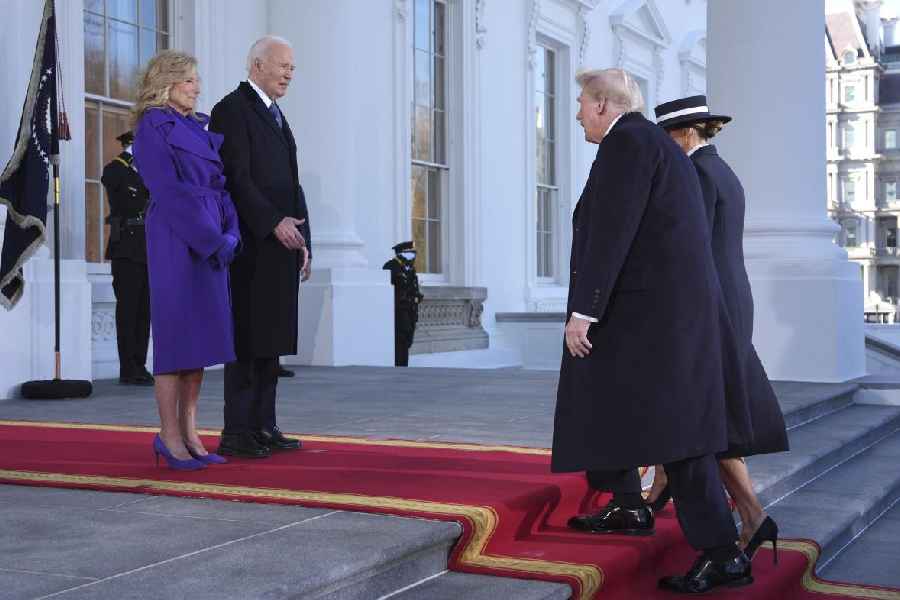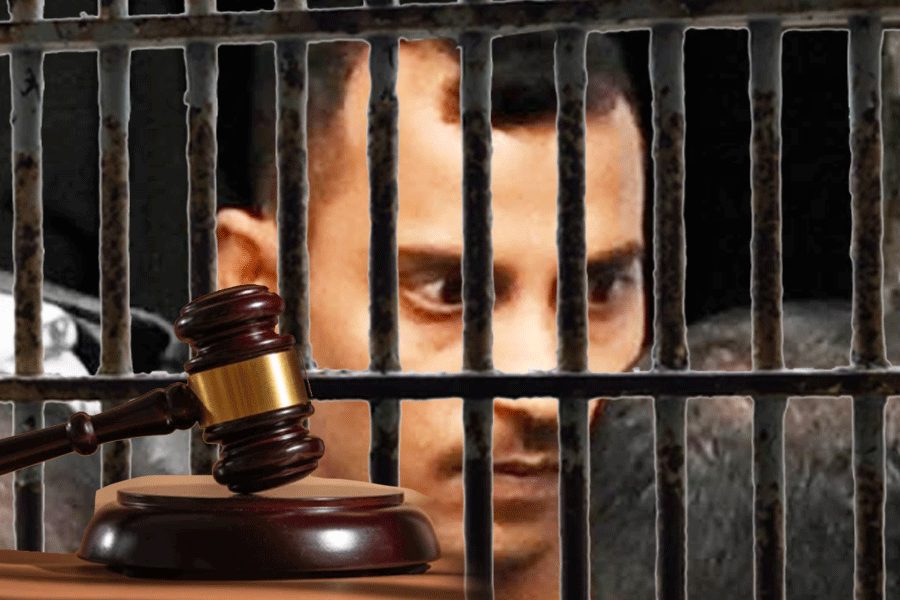Dan Walsh, an American Peace Corps volunteer, was serving in Marrakesh, Morocco, in the mid-1970s. At the government-run Youth Employment Training Assistance Center, his job as the industrial arts instructor required him to translate lesson plans from English to Arabic. One day, he was asked to translate some of the posters he came across in the north African city.
Walsh was on a translating spree when he stumbled on a word he could “neither sound out nor comprehend”. That day, a stranger helped him. The word turned out to be “Palestine” and the man was a representative of the Palestine Liberation Organization in Morocco. Before they parted ways, he gave Walsh a bunch of Palestine posters.
This backstory is part of Walsh’s master’s thesis from 2011.
Years later, when Walsh returned to the US, his collections-turned-specialised-interest assumed different shapes and forms. One of them was the Palestine Poster Project Archives (PPPA) and thereafter the PPPA website.
Political posters, even graffiti, are more or less a thing of the past. To think that Erwin Schockel’s Das Politische Plakat: Eine Psychologische Betrachtung or The Political Poster: A Psychological Study was “official propaganda manual” for the German Nazi Party. ROSTA posters were used by the Soviet Union government in the early 20th century. There is the famous Kitchener poster from around the same time. It is Britain’s secretary of war’s wake-up call to his countrymen to join the army and it became the template for the Uncle Sam — I want you for the US Army — poster used during World War I and II. Anti-imperialist posters created by OSPAAAL (Organization of Solidarity with the People of Asia, Africa and Latin America) were designed in Cuba and distributed all over the world from the 1960s right through to the 1990s. Here, in Calcutta and Bengal, the Naxalite movement of the 1970s gave an impetus to posters and wall writing.
Examples abound. But that was then. If this city of ours speaks to some kind of a global trend, then it is the flex-age and they are achatter with politically neutered posters, mostly advertisements — de-addiction cures, massage parlours, termite control, announcements of visiting swamis. What survives of the political messaging has migrated to the virtual world.
It is against this backdrop that you might want to visit the PPPA website.
The website is constantly shuffled, the collection routinely updated. Many of the 2023 posters have to do with events organised in solidarity with Palestine — a benefit for the Palestine Children’s Fund, a night of live music in solidarity, drive in donations — in the US, Canada, the UAE. Initiatives by the “indigenous contingent”, queers, artworks by Nicaraguan printmakers, Palestinian artists, an Irish Socialist Republican organisation, to name a few.
There is one poster with some writing in Spanish and the caption reads: “This mural expressing solidarity with Palestine that has been painted, repeatedly erased by authorities, and repainted.” The English translation of the slogan is “Mexico (is) with Palestine” and it is from a wall in Oaxaca in Mexico.
The Palestine Poster is a genre by itself and in the context of this particular online archive, Walsh has put out a multi-layered definition for it. Let’s consider just one of them — any poster with the word “Palestine” in it, in any language, from any source or time period.
There are posters from across 103 countries. As listed on the website, there are 35 posters from India. This year’s entries from India are all of two — one by the Young Socialist Artists (India), which is an artists’ collective, and another by the WFTU (World Federation of Trade Unions) office in New Delhi.
The PPPA website has the posters arranged by sources or “wellsprings”. The four wellsprings are Arab/Muslim Artists/Agencies, International Artists/Agencies, Palestinian Nationalist Artists/Agencies and Zionist/Israeli Artists/Agencies.
The earliest posters from the Zionist wellspring date back to the 1920s. Many of them have to do with Jaffa oranges and Hebrew Watermelons, Camel Oriental Brandy, Izhar Olive Oil and bath soaps.
That is not to say they are apolitical. A lot of it is seething with “insider” jokes and messages. For instance, there is the well-known 1935 “Visit Palestine” poster by the Austrian Jew Franz Krausz for the Tourist Development Association of Palestine. The poster is an apparently idyllic depiction of Jerusalem’s Old City and can be and has been interpreted variously. In 2009, Palestinian artist Amer Shomali made a poster with a spin on Krausz’s work.
Shomali painted into the familiar and famous scene, the Israeli West Bank barrier built by Israel and printed the following line at the bottom of the poster: “I agree that adding the wall is vandalism and a rude intervention. — The Designer.”
At the time of Krausz’s poster, there was no state of Israel; it was formed only in 1948. The poster boy from the 2023 Israel wellspring is, of course, Benjamin Netanyahu, but there are some posters that feature far-Right politician and minister of national security Ben-Gvir. For most of these, the credit line reads Deliberately/Collectively Anonymous.
The Palestinian wellspring is astutter too and not anonymously at that.
One of the recent posters shows a keffiyeh, which is the headdress worn by Arab men; a gun; a hand clasping it and the following message in Arabic. “Hearts don’t calm down... carrying the soul in the palms. Shoot for the head of the Yamam Zionist death squad”. Yamam is Israel’s national counter-terrorism unit and the poster is by the Popular Front for the Liberation of Palestine.











